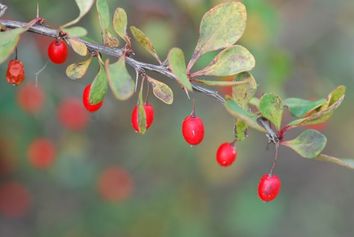Japanese Barberry Trade-up Days
|
Like many invasive species, Japanese barberry was introduced to the United States as an ornamental. Its hardy nature and red berries made it an attractive addition to landscapes in the late nineteenth century. Unfortunately, those qualities also allow it to spread voraciously beyond garden boundaries and into nearby natural areas. Unappetizing to deer because of its thorny stems, barberry is left unchecked and quickly takes over - pushing out native plant species and severely reducing the amount of wildlife that can live in an area. Additionally, research shows that a barberry's dense foliage creates a perfect, humid climate for blacklegged ticks that carry Lyme disease - a fact that also creates a public health risk.
ISN is giving landowners the opportunity to trade-in Japanese barberry for a coupon good for a non-invasive alternative*. Hosted at the new ISN Offices and Manistee Conservation District, pre-registered individuals can bring in their removed barberry shrubs to be disposed of correctly. In exchange, they will be given a coupon to a local horticultural business that participates in ISN's Go Beyond Beauty program. This ensures that any replacement plant or service will be non-invasive and support an array of wildlife! This is a great opportunity to transition your landscape to one that does not threaten nearby natural areas. 2024 events:
Registration has closed for 2024! Thank you. Need help with identification? Visit this page to learn more about what barberry looks like and proper management. Also, check out this video created by Nature Change that breaks down WHY barberry is a problem and WHAT you can do to help!
*Each Japanese barberry plant exchanged will result in the receipt of a $5.00 coupon. A household may receive up to $50.00 in coupons.
For more information or questions, please contact ISN Go Beyond Beauty Specialist, Shelly Stusick - [email protected] This project is funded in part by the Michigan Invasive Species Grant Program. |









